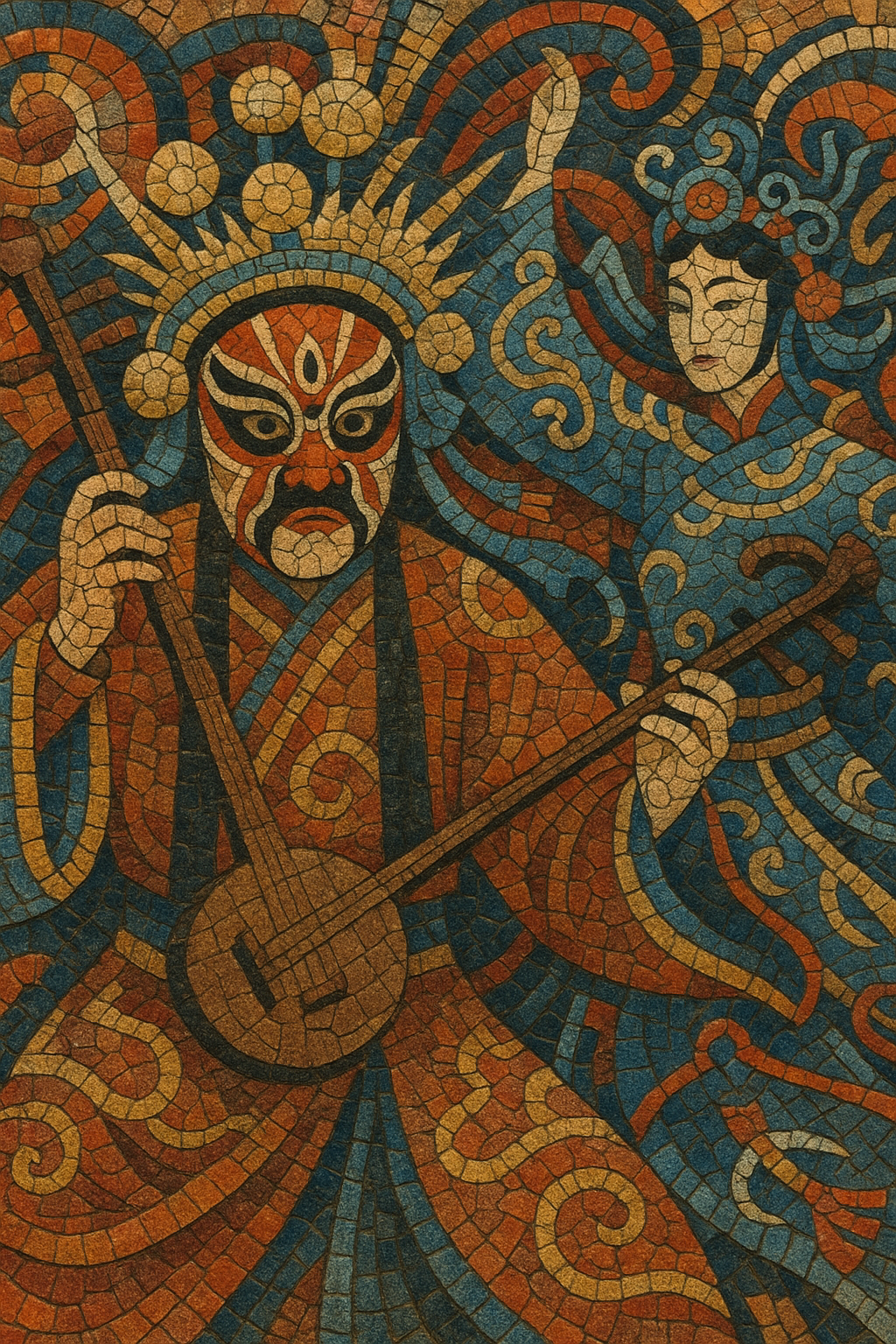Sichuan opera (Chuanju) is a major regional form of Chinese opera originating in the Sichuan–Chongqing area. It blends multiple older operatic currents—especially Kunqu singing and local folk-tune traditions—into a vivid stage art known for agile vocalism, brisk dialogue in the Sichuan dialect, and highly physical stagecraft.
It is world-famous for spectacular specialty techniques such as face-changing (bian lian), fire-spitting, quick costume changes, and acrobatic combat. Musical accompaniment draws on a pentatonic palette and the banqiang (aria-plus-meter) system, led by clappers and gongs with huqin fiddles, dizi flutes, and suona. Role types follow the xiqu convention (sheng, dan, jing, chou), but performance emphasizes wit, rhythm, and dramatic surprise.
Sichuan opera took shape in the mid–Qing dynasty as several operatic streams migrated into Sichuan—most notably Kunqu (昆曲) and various qiang (腔) singing systems—meeting local folk narrative and song. By the 1700s, these influences consolidated into distinct stylistic strands within what became known collectively as Chuanju.
Tradition speaks of five principal singing styles under the Sichuan opera umbrella: Gaoqiang (percussion-led, chorus-supported arias), Kunqiang (derived from Kunqu’s elegant, melismatic line), Huqin (fiddle-accompanied), Tanxi, and Pihuang (related to the pihuang tune family shared with other northern operas). This plurality gave Sichuan opera unusual flexibility of mood, pacing, and scene construction.
Urban theaters in Chengdu and Chongqing supported professional troupes, while itinerant companies spread the form throughout southwest China. Craft specialization deepened: martial choreography integrated acrobatics and weapons play, comic roles honed rapid-fire patter, and visual design codified vividly painted face patterns.
After periods of disruption, state troupes and research institutes systematized training, revived classic repertory, and created new works. Sichuan opera’s signature stage magic—especially bian lian (face-changing) and fire-spitting—became cultural calling cards in international festivals. Today, the genre is safeguarded as intangible cultural heritage, with conservatories and troupes in Chengdu and Chongqing maintaining both traditional and newly composed plays.
Write for the xiqu role system (sheng, dan, jing, chou). Use Sichuan dialect in spoken passages and lyrics where appropriate. For arias, follow the banqiang system (fixed melodic patterns adapted to different meters and tempi), with clear cadences and pentatonic contours. Balance lyrical Kun-style lines with more declamatory, percussive Gaoqiang passages.
Base melodies on Chinese pentatonic modes; ornament with slides, turns, and portamenti. Alternate recitative-like dialogue with set arias and ensemble/stage-business sequences. Employ tempo modulation within arias (slow–medium–fast) and rhythmic cues from percussion to signal scene changes, entrances, and action beats.
Use a small pit ensemble led by percussion: clappers (ban), gongs and cymbals (luo/nao), and drum (gu) to shape pacing. Add huqin family (erhu/banhu), dizi (transverse flute), suona (for bright martial color), and sheng (mouth organ) for harmonic support and timbral contrast. Keep textures transparent so text and gesture remain primary.
Compose scenes that integrate movement: fan/sleeve work, acrobatics, stage combat, and comedic timing. If writing for spectacle, design moments for bian lian (face-changing), fire-spitting, and quick costume/prop transformations—always motivated by character and plot rather than as stand-alone tricks.
Adapt historical tales, folk romances, and morality plays. Structure in clear scenes with escalating conflicts; punctuate transitions with percussion cues. Lyrics should balance parallelism and vivid imagery with colloquial humor typical of Sichuan stage speech.


